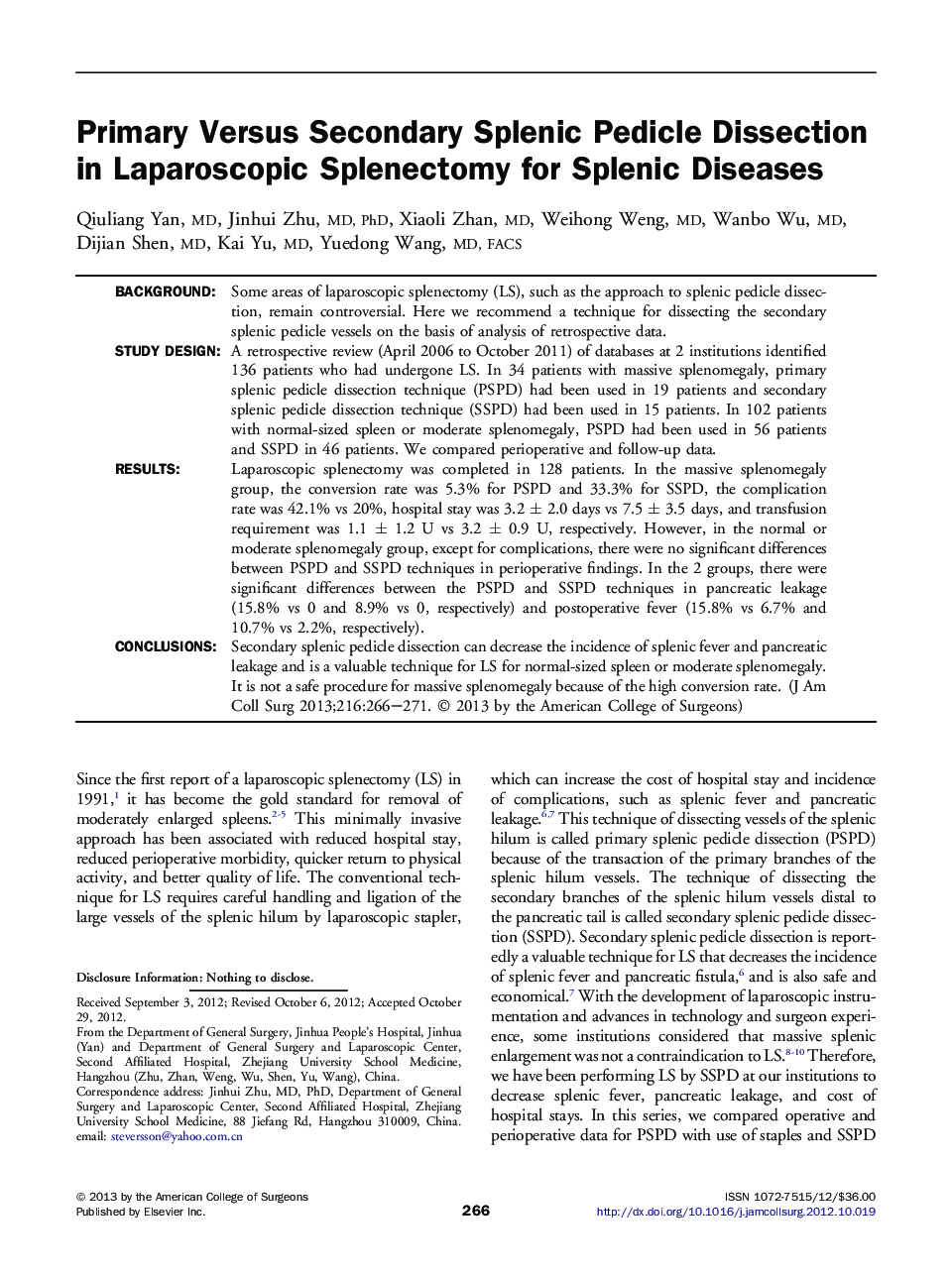| کد مقاله | کد نشریه | سال انتشار | مقاله انگلیسی | نسخه تمام متن |
|---|---|---|---|---|
| 4291803 | 1612250 | 2013 | 6 صفحه PDF | دانلود رایگان |

BackgroundSome areas of laparoscopic splenectomy (LS), such as the approach to splenic pedicle dissection, remain controversial. Here we recommend a technique for dissecting the secondary splenic pedicle vessels on the basis of analysis of retrospective data.Study DesignA retrospective review (April 2006 to October 2011) of databases at 2 institutions identified 136 patients who had undergone LS. In 34 patients with massive splenomegaly, primary splenic pedicle dissection technique (PSPD) had been used in 19 patients and secondary splenic pedicle dissection technique (SSPD) had been used in 15 patients. In 102 patients with normal-sized spleen or moderate splenomegaly, PSPD had been used in 56 patients and SSPD in 46 patients. We compared perioperative and follow-up data.ResultsLaparoscopic splenectomy was completed in 128 patients. In the massive splenomegaly group, the conversion rate was 5.3% for PSPD and 33.3% for SSPD, the complication rate was 42.1% vs 20%, hospital stay was 3.2 ± 2.0 days vs 7.5 ± 3.5 days, and transfusion requirement was 1.1 ± 1.2 U vs 3.2 ± 0.9 U, respectively. However, in the normal or moderate splenomegaly group, except for complications, there were no significant differences between PSPD and SSPD techniques in perioperative findings. In the 2 groups, there were significant differences between the PSPD and SSPD techniques in pancreatic leakage (15.8% vs 0 and 8.9% vs 0, respectively) and postoperative fever (15.8% vs 6.7% and 10.7% vs 2.2%, respectively).ConclusionsSecondary splenic pedicle dissection can decrease the incidence of splenic fever and pancreatic leakage and is a valuable technique for LS for normal-sized spleen or moderate splenomegaly. It is not a safe procedure for massive splenomegaly because of the high conversion rate.
Journal: Journal of the American College of Surgeons - Volume 216, Issue 2, February 2013, Pages 266–271